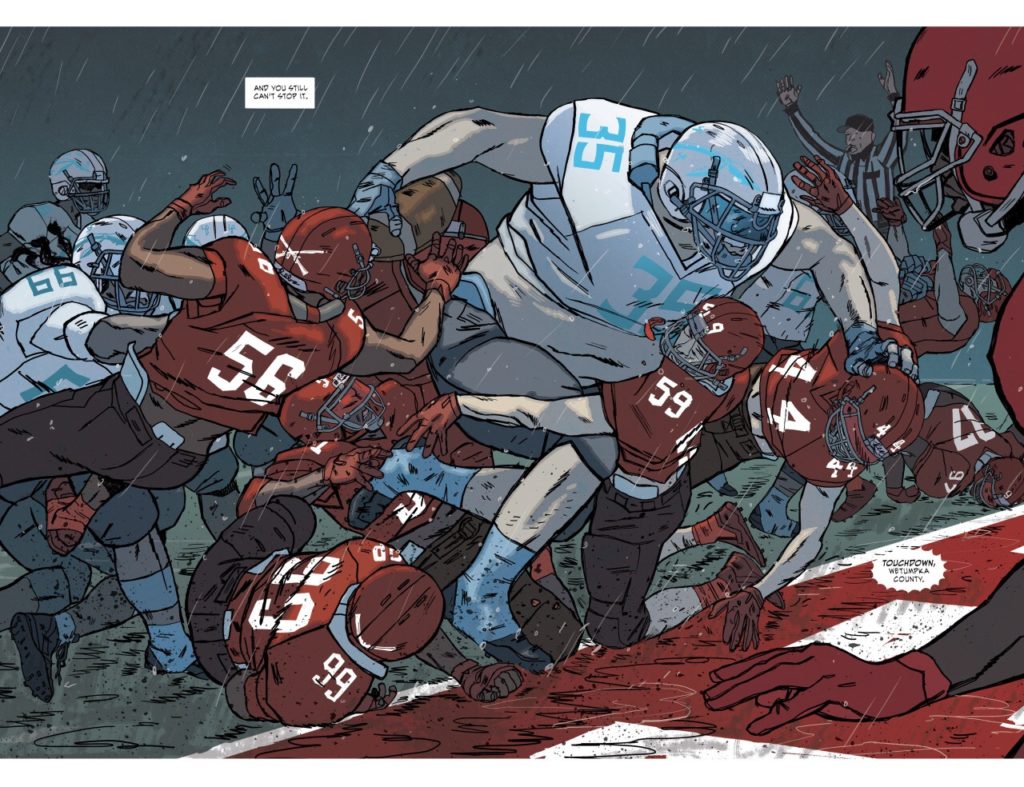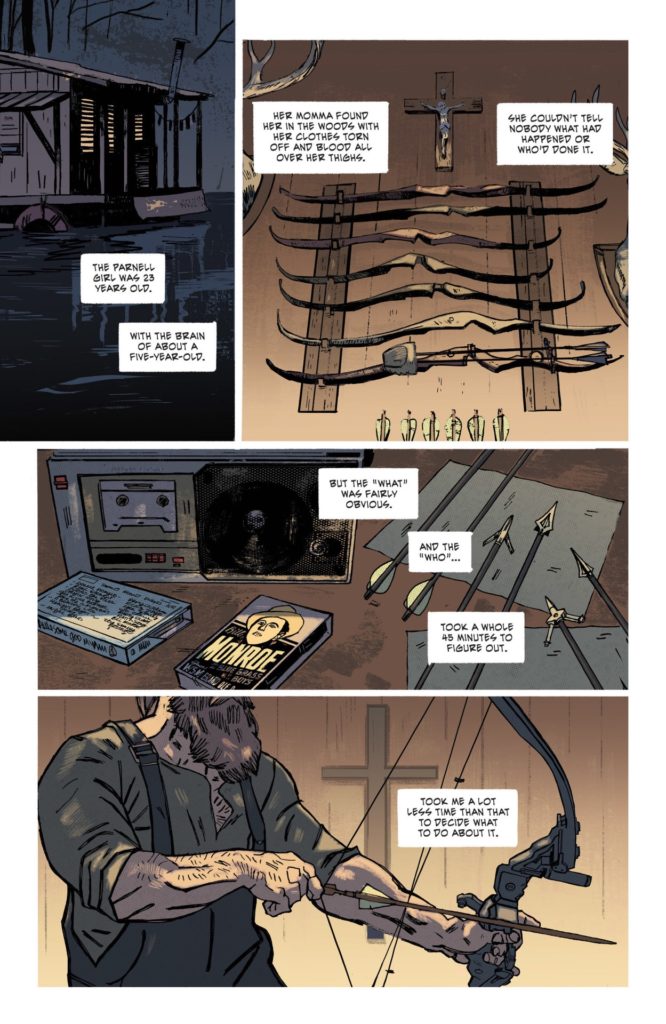
If you call yourself a comic book fan and have not yet experienced Jason Aaron and Jason Latour’s seminal Image series Southern Bastards, I can’t emphasize how much you’re missing out. The first two volumes are some of the most gripping and well-crafted graphic novels I’ve ever read, demonstrating the true potential of this medium.
With the third volume Homecoming, Aaron and Latour take a different approach than the previous arcs by telling a series of interconnected short stories, rather than a single narrative. The result is arguably the best run yet in the series, combining stellar characterization with a relentlessly gritty look at the American south.

Following the suicidal death of Coach Boss’ longtime friend and mentor Coach Big, the first chapter is told from the perspective of Sheriff Hardy. Right from the start, Aaron and Latour remind us that this book isn’t about heroes and villains, but rather that each character comes with their own set of flaws and complexities. Hardy is a man beaten down by his past and caught in the midst of an existential crisis. He wants to find happiness, but spends most of his days fantasizing about the glory days when he was a big shot on Boss’ football team, and about his high school girlfriend. Between Aaron’s Cormac McCarthy-esque text and Latour’s succinctly grim pencils, readers are able to empathize with Hardy without it feeling forced. The details that they imbue into each panel are breathtaking, making it impossible to put this one down.
As the story progresses, which centers around the annual homecoming game between the Craw County Running Rebs and their rivals from Wetumpka, we see a series of one-shots focusing on other supporting characters. There’s Esaw Goings, a sadistic associate of Boss who’s confronted one day by an evangelical Christian; Deacon Boone, a skilled hunter on a mission from God to rid Craw County of the evil infesting it; Boss’ more sympathetic lackey Materhead; and in the last issue we see the much-anticipated arrival of Earl Tubb’s daughter Roberta, an ex-marine who returns home in the wake of her father’s death. And prior to Roberta’s chapter, the creators deliver the climactic homecoming game, in which Coach Boss must play without Big as his right-hand man.

Whereas most comics today deliver traditional arcs that focus on the same character or set of characters, the fact that Southern Bastards does the exact opposite is a testament to its sheer originality. Just look at the structure of the series as a whole. Volume one tells the story of Earl Tubb, a man born and raised in the south and a Vietnam veteran who returns home in the wake of his father’s death (which of course is paralleled by his daughter), and who is killed by the sadistic football couch Euless Boss, a man who controls most of Craw County. Volume two then explores the backstory of Coach Boss, and how a brutal childhood and an abusive father turned him into the monster he is today. With volume three, the reader’s expectations are once again beautifully subverted, as this arc explores characters we had heard about or seen glimpses of in previous chapters.
This is what makes Southern Bastards so profound and invigorating: it’s a book about the harsh realities of the south, and how themes of crime, love, hatred, passion and vengeance play out through its bizarre cast of characters. As much as it paints a grim picture of various facets of southern life, it’s also never one-sided. Given that Aaron and Latour are both born and bred southerners, they inject a wealth of personal anecdotes and nuances to make it as authentic as possible. On that note, I highly recommend reading an essay by Latour in the back of this book, as he wrote it in response to one of the more controversial covers of an issue from this volume.
There’s little more I can say other than go buy this book. The art, storytelling, characters and themes are only getting better with each trade and issue, and it’s already a contender for my favorite ongoing series.
Rating: 10/10